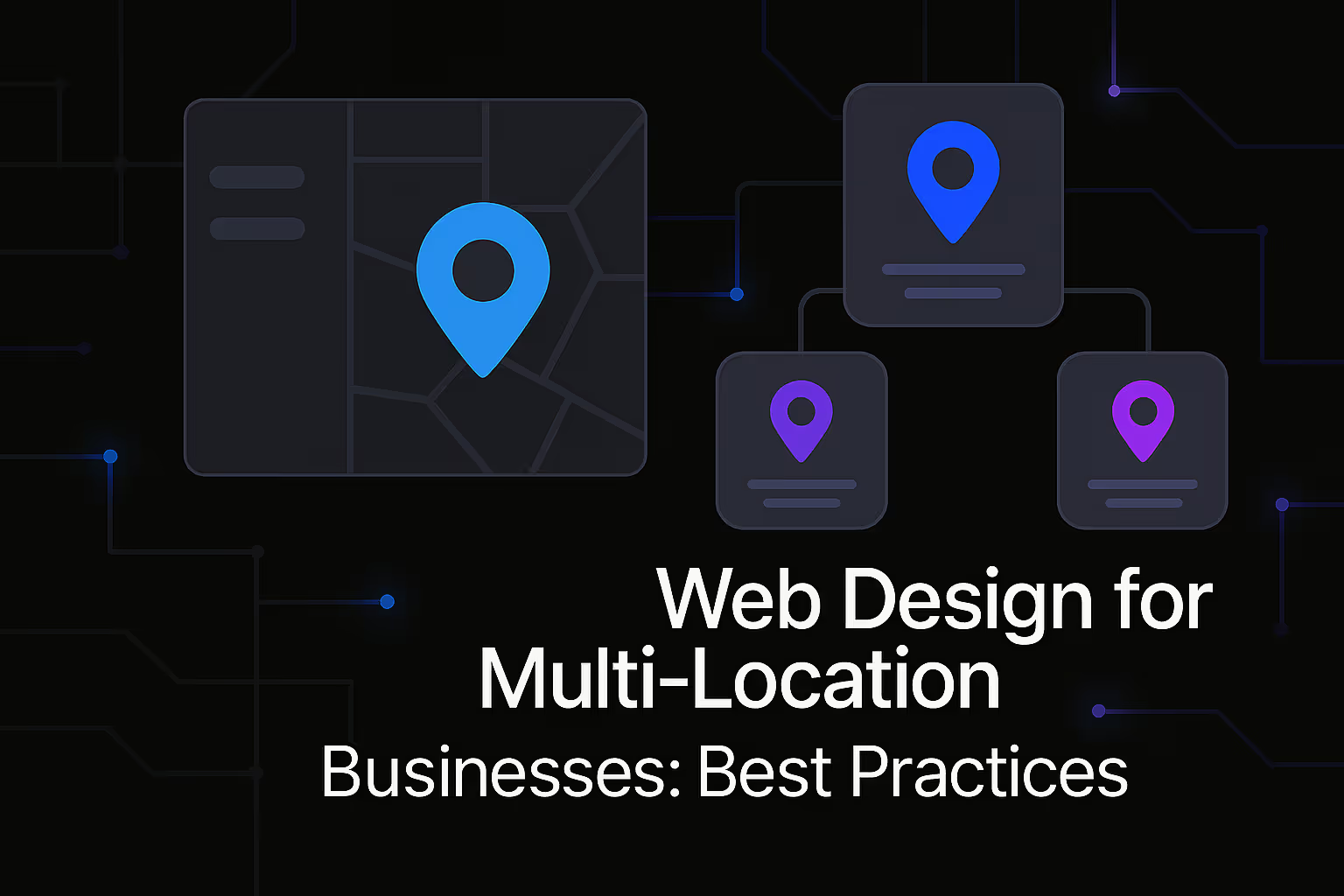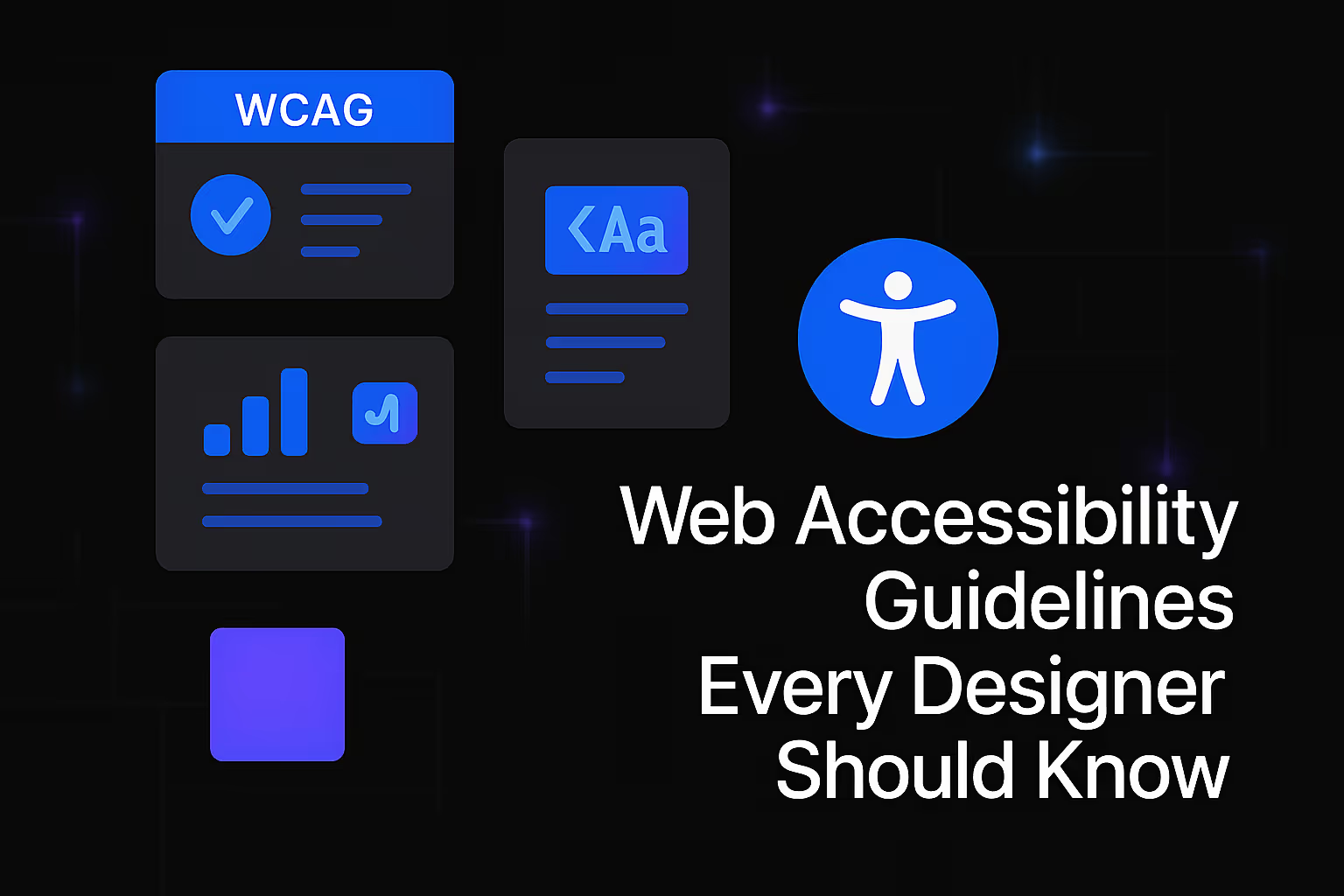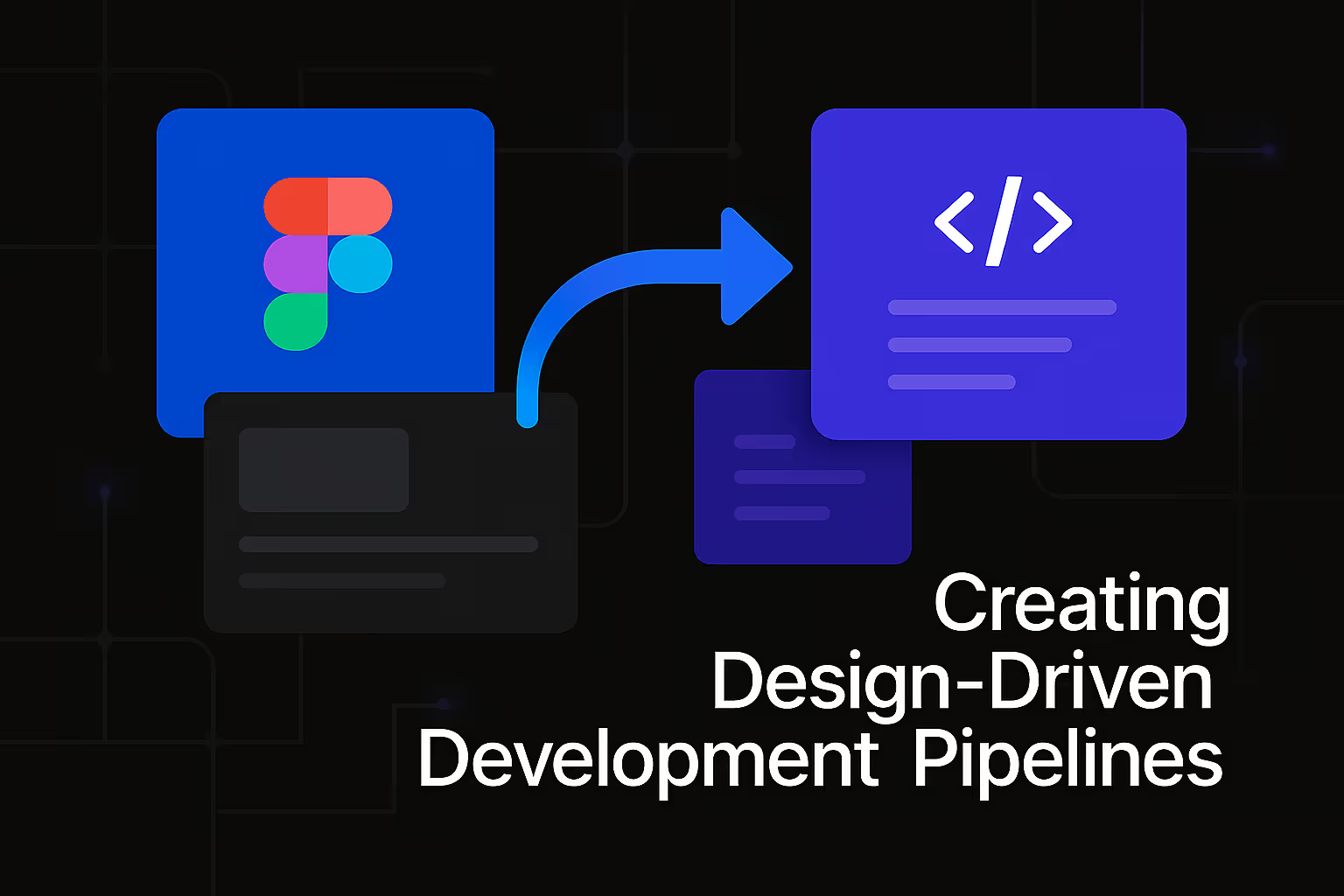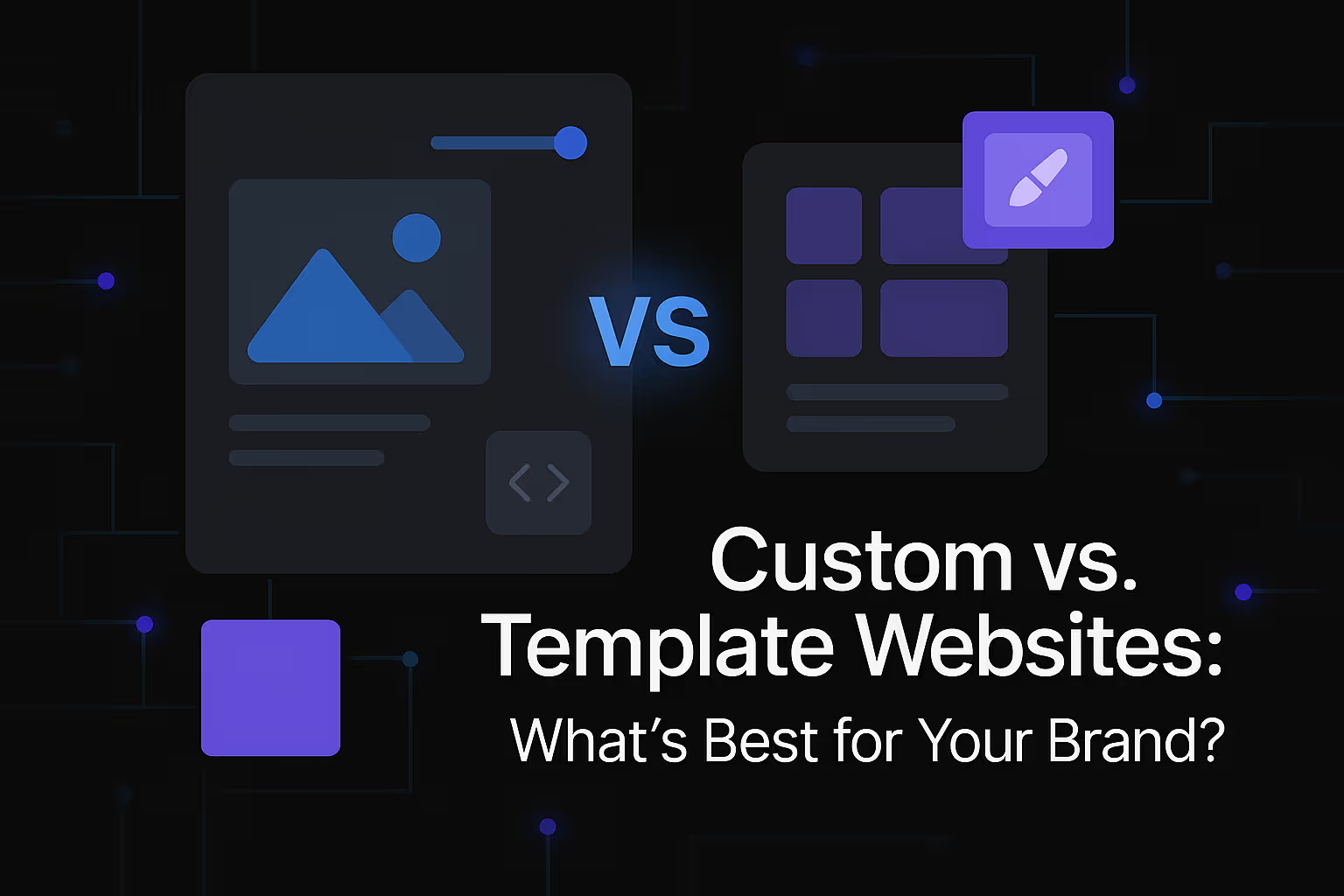Web Design for Multi-Location Businesses: Best Practices

For businesses operating across multiple locations, an effective web design strategy is far more complex than simply building a single website. It demands a nuanced understanding of how to cater to both a broad brand identity and the specific needs of local audiences. The cornerstone of success lies in web design that is not only visually appealing and user-friendly but also meticulously optimized for search engines, particularly for local search. This intricate balance ensures that each location can thrive independently while contributing to the overall strength of the brand.
A well-architected website for a multi-location business is a powerful digital asset. It allows for localized content, optimized for specific geographic keywords and services, which significantly enhances visibility in local search results. This localized approach resonates deeply with users seeking nearby services or products, driving relevant traffic and ultimately, conversions. Beyond local optimization, the overarching web design must maintain brand consistency, providing a seamless and recognizable experience across all locations. This article will delve into the best practices for web design for multi-location businesses, focusing on strategies that enhance search engine optimization and user experience.
The Foundation: Understanding the Multi-Location SEO Landscape
The digital landscape for multi-location businesses presents a unique set of challenges and opportunities. Unlike a single-location entity, a business with multiple branches must navigate the complexities of local search algorithms while maintaining a cohesive national or global presence. Search engines strive to provide the most relevant results, and for local queries, this often means prioritizing businesses that are physically close to the searcher and have strong local signals.
Effective web design for multi-location businesses begins with a comprehensive understanding of how search engines interpret and rank local information. This involves recognizing the importance of distinct location pages, consistent name, address, and phone number (NAP) information across all online platforms, and the strategic use of local keywords. The goal is to ensure that each individual location is discoverable and appealing to its specific local audience, without cannibalizing the search performance of other locations or diluting the overall brand authority.
Prioritizing Local Relevance with Dedicated Location Pages
One of the most critical elements of web design for multi-location businesses is the creation of dedicated, optimized pages for each physical location. These pages serve as crucial hubs for local search, providing specific information that search engines and users alike seek. Each location page should be a mini-website within the larger structure, offering a wealth of relevant details.
A dedicated location page should include the full business name, address, and phone number, ensuring this information is consistent with all other online listings, particularly Google Business Profile. Beyond basic contact details, these pages should feature unique, localized content. This could involve specific services offered at that location, testimonials from local customers, details about the local team, or even community involvement. High-quality images of the specific location, including interior and exterior shots, can significantly enhance user engagement and provide visual cues that reinforce the local presence. It is also beneficial to embed a map to the location, making it easy for users to find directions. This detailed and localized content signals to search engines that the page is highly relevant for geographically specific queries, thereby boosting its visibility in local search results.
Structured Data and Schema Markup for Local SEO
To further aid search engines in understanding the specific details of each location, implementing structured data, particularly Schema Markup, is paramount. Schema Markup is a form of microdata that you can add to your website's HTML to help search engines better understand the content on your pages. For multi-location businesses, `LocalBusiness` schema is incredibly valuable.
This type of structured data allows you to explicitly provide details such as the business name, address, phone number, opening hours, accepted payment methods, and even departmental information. By embedding this information directly into the website's code, you make it easier for search engines to extract and display key business information directly in search results, often in rich snippets. This can lead to increased click-through rates (CTR) as users can quickly see essential details without even visiting the page. Properly implemented schema markup for each location page can significantly improve how your business appears in local search, including Google Maps and the local pack results.
Technical SEO: The Unseen Backbone of Multi-Location Web Design
While user-facing elements are vital, the underlying technical architecture of a multi-location website plays an equally crucial role in its SEO performance. Technical SEO ensures that search engine crawlers can efficiently discover, understand, and index all relevant pages across the site. For businesses with numerous locations, technical considerations become even more complex and critical for preventing issues like duplicate content and ensuring optimal crawl efficiency.
A robust technical SEO foundation supports the entire website, making it accessible and understandable to search engines. This includes meticulous attention to URL structure, sitemap optimization, and careful management of canonicalization. Neglecting these aspects can lead to significant indexing problems, hindering your ability to rank for key local and broader keywords.
URL Structure and Canonicalization: Guiding Search Engine Interpretation
A well-structured URL is crucial for both user understanding and search engine interpretation. For multi-location businesses, a logical and consistent URL structure is essential for organizing content and signaling location relevance. URLs should be descriptive and include words useful for users, clearly indicating the location or service being highlighted. For example, `yourbusiness.com/locations/city-name/` is far more effective than a URL with random identifiers.
Organizing topically similar pages into logical directories or folders also helps Google understand the site's structure and how frequently content within those directories changes, which can influence crawling efficiency. These descriptive URLs can also appear as breadcrumbs in search results, further aiding user comprehension.
The management of duplicate content through canonicalization is equally paramount. When the same or very similar content appears under different URLs, search engines select a single canonical URL to display to users. For multi-location businesses, this can arise if, for instance, you have identical service descriptions across different location pages. Implementing `rel="canonical"` tags correctly directs search engines to the preferred version of a page, preventing content dilution and ensuring that the intended, preferred version of the content achieves optimal ranking. This prevents search engines from being confused by multiple versions of essentially the same content, consolidating ranking signals to the designated canonical URL.
Sitemap Optimization and Robots.txt Management: Strategic Crawl Control
Sitemaps serve as a vital communication channel, informing Google about the important pages on a site and providing additional context, such as update frequency. They are particularly important for ensuring the discovery and crawling of non-textual content like images and videos. While Google does not limit its crawling to pages listed in sitemaps, it does prioritize them, which is especially beneficial for sites with extensive content or new locations that might not yet be easily discovered through internal links. For a multi-location business, a well-organized sitemap ensures that every location page and its associated content are readily discoverable by search engines.
Complementing sitemaps, the `robots.txt` file acts as a set of instructions for search engine crawlers, telling them which parts of your site they can or cannot access. Strategic use of `robots.txt` is crucial for managing crawl budget and preventing search engines from wasting time on unimportant or duplicate content. For instance, you might use `robots.txt` to disallow crawling of internal search result pages or certain administrative sections of your site. It is imperative to ensure that `robots.txt` does not inadvertently block search engines from accessing your important location pages or other valuable content. Regular review of both your sitemap and `robots.txt` is recommended to ensure they align with your evolving web design and SEO strategy.
Content Strategy: Beyond Just Location Names
While technical SEO and dedicated location pages form the structural backbone, the actual content on your website is what engages users and provides valuable signals to search engines. For multi-location businesses, content strategy needs to be multifaceted, incorporating local nuances while maintaining overall brand messaging. This involves not only optimizing text but also integrating compelling multimedia and establishing a robust internal linking structure.
The aim is to create content that is not only keyword-rich but also genuinely helpful and informative to the target audience at each specific location. This approach aligns with Google's emphasis on E-E-A-T (Experience, Expertise, Authoritativeness, and Trustworthiness), ensuring that your website is perceived as a reliable and valuable resource.
Hyper-Local Content Creation: Speaking to the Community
Beyond generic service descriptions, hyper-local content is crucial for connecting with specific communities and signaling relevance to local search queries. This involves crafting unique content for each location page that goes beyond just listing services. Consider incorporating details about local events, community involvement, or partnerships unique to that branch.
For example, a multi-location restaurant chain might feature a blog post about locally sourced ingredients for each restaurant, or a retail business might highlight specific promotions or events happening only at their particular storefront. This type of content demonstrates an understanding of the local market and directly addresses the interests of potential customers in that area. It also naturally incorporates local keywords and phrases that people in the vicinity might use when searching for your services. This approach fosters a stronger connection with the local audience and provides search engines with richer, more specific signals about each location's offerings.
Optimizing Images and Multimedia: Visual Engagement and SEO
Images and multimedia elements are vital for enhancing engagement and SEO. High-quality images should be added near relevant text within the content, breaking up large blocks of text and making pages more visually appealing. Crucially, all images must include descriptive alt text, which helps search engines understand the image content and improves accessibility for users with visual impairments. While keywords can be included in alt text, keyword stuffing should be avoided; the primary goal is clear and concise description.
For businesses with multiple locations, showcasing unique images of each branch can further enhance the localized experience. This could include photos of the exterior, interior, staff, or local customers interacting with the business. For videos, best practices include creating high-quality content, embedding videos on standalone pages near relevant text, and writing descriptive titles and descriptions for them. Overall accessibility for all multimedia elements is also an important consideration, ensuring that everyone can engage with your content.
Strategic Internal and External Linking: Building a Robust Content Network
Strategic linking is fundamental to both user navigation and SEO performance. The website should include links to other relevant, existing content within the website. Internal linking is invaluable for guiding readers through the site, helping them discover more related content, and is crucial for establishing a robust site structure that benefits rankings. Specifically, long-tail content (or "tail" pages) should link strategically to more general "head" or "cornerstone" content, signaling importance and distributing link equity. Descriptive anchor text, which accurately reflects the content of the linked page, should be used for all internal links. This not only helps search engines understand the context of the linked page but also improves user experience by providing clear navigation cues.
Beyond internal links, external links to authoritative and relevant external resources can also enhance your website's credibility and provide valuable context for users. While the primary focus for multi-location businesses is often on internal linking to build out their local content network, a thoughtful approach to external linking can also contribute to overall SEO performance. The goal is to build a robust content network that is easily navigable for both users and search engine crawlers.
User Experience: Beyond SEO, For Real People
While SEO focuses on attracting visitors, user experience (UX) is about keeping them engaged and converting them into customers. For multi-location businesses, a positive UX is paramount, as it directly impacts bounce rates, time on site, and ultimately, conversions. A website that is fast, responsive, and easy to navigate across all devices will naturally perform better in search rankings and foster customer loyalty.
A seamless and intuitive user experience across all location pages builds trust and reinforces brand consistency. Users should be able to effortlessly find the information they need, whether it's directions to a specific store, details about a local service, or contact information for a particular branch.
Mobile-First Design: Reaching Customers on the Go
In today's mobile-driven world, a mobile-first design approach is no longer optional; it is a necessity, particularly for multi-location businesses where a significant portion of local searches occur on mobile devices. Google prioritizes mobile-friendly websites in its search rankings, making responsiveness a key factor for SEO success.
A mobile-first design means building your website primarily for mobile devices and then scaling up for larger screens. This ensures that your website loads quickly, is easy to navigate with touch controls, and all content is readily accessible on smaller screens. This includes ensuring that location information, contact details, and calls to action are prominently displayed and easy to tap. A seamless mobile experience directly contributes to lower bounce rates and higher engagement, both of which are positive signals for search engines.
Page Speed and Core Web Vitals: The Need for Speed
Page speed is a critical ranking factor and a significant component of user experience. Slow-loading websites frustrate users and can lead to high bounce rates. For multi-location businesses, where users might be looking for immediate information about nearby services, speed is even more crucial. Google's Core Web Vitals, a set of metrics that measure real-world user experience for loading performance, interactivity, and visual stability, are now integral to search ranking.
Optimizing images, leveraging browser caching, minimizing code, and using a robust hosting provider are all essential for improving page speed. Regularly auditing your website's performance and addressing any identified bottlenecks is key to ensuring a fast and fluid experience for all users, regardless of their device or location. A fast website not only pleases users but also allows search engine crawlers to access and index your content more efficiently.
Intuitive Navigation and Localized Calls to Action
Effective navigation is crucial for guiding users through your multi-location website and helping them find the information they need quickly. A clear and consistent navigation menu, ideally with a prominent "Locations" or "Find Us" section, is essential. Within each location page, providing intuitive ways for users to contact that specific branch, get directions, or learn more about local services is vital.
Localized calls to action (CTAs) are also incredibly important. Instead of generic "Contact Us," consider "Call Our [City Name] Branch" or "Get Directions to Our [City Name] Store." These localized CTAs personalize the user experience and drive more relevant actions. The goal is to make it as easy as possible for users to engage with the specific location they are interested in, converting online interest into real-world visits and business.
Building Authority: Reviews, Citations, and Local Backlinks
Beyond the on-site elements, a multi-location web design strategy must extend to off-site factors that build authority and trust in the eyes of both users and search engines. This largely revolves around local citations, online reviews, and local backlinks, all of which signal the legitimacy and relevance of each individual business location.
These external signals are particularly potent for local SEO, as they help search engines validate the existence and reputation of your physical locations. A strong local online presence, supported by consistent and positive external signals, significantly enhances your ability to rank competitively in local search results.
Google Business Profile Optimization: The Local SEO Hub
For any multi-location business, optimizing each Google Business Profile (GBP) listing is absolutely non-negotiable. GBP is arguably the most powerful tool for local SEO, directly influencing your visibility in Google Maps and the local pack results. Each location needs its own verified GBP listing, meticulously filled out with accurate and complete information.
This includes consistent NAP (Name, Address, Phone Number) information, business hours, categories, services, and high-quality photos. Regularly updating your GBP with posts, offers, and responding to reviews signals to Google that your business is active and engaged. Clicks from an optimized Google Business Profile are a vital metric for local SEO success, directly driving traffic and phone calls to your physical locations. A well-managed GBP listing for each location can be the single biggest driver of local search visibility.
Cultivating Online Reviews and Reputation Management
Online reviews are a powerful form of social proof and a significant ranking factor for local SEO. Encouraging customers to leave reviews on Google Business Profile, Yelp, and other relevant industry-specific platforms is crucial. Positive reviews not only build trust with potential customers but also signal to search engines that your business is reputable and provides a good customer experience.
Equally important is actively managing your online reputation by responding to all reviews, both positive and negative, in a timely and professional manner. Responding to negative reviews demonstrates a commitment to customer satisfaction and can mitigate potential damage to your brand. A consistent stream of positive reviews across multiple platforms reinforces your local authority and can significantly improve your local search rankings.
Local Citations and Backlink Building: Expanding Your Footprint
Local citations are mentions of your business's NAP information on other websites, even without a direct link back to your site. These can include online directories, industry-specific listings, and local business associations. Consistency across all these citations is key; any discrepancies can confuse search engines and dilute your local SEO efforts. Building a broad network of accurate local citations helps validate your business's existence and location to search engines, bolstering your local search visibility.
While the AI cannot directly build relationships for link acquisition, your web design should be inherently link-worthy, encouraging organic citations and backlinks. Local backlinks, which are links from other relevant local websites (e.g., local news sites, community organizations, local blogs), are particularly valuable. These links signal strong local relevance and authority to search engines. Developing relationships with other local businesses and organizations can lead to valuable backlink opportunities that further strengthen your local SEO profile.
Continuous Optimization: The Ever-Evolving Digital Landscape
The world of SEO and web design is constantly evolving. Search algorithms are updated regularly, user behaviors shift, and new technologies emerge. For multi-location businesses, a "set it and forget it" approach to web design and SEO is a recipe for stagnation. Continuous monitoring, analysis, and adaptation are essential for maintaining and improving search rankings and user engagement over time.
This iterative improvement ensures that your web design remains effective, relevant, and compliant with the latest SEO best practices. Proactive monitoring of key metrics allows you to identify opportunities for improvement and respond swiftly to any challenges.
Performance Monitoring and Analytics: Data-Driven Decisions
Regularly monitoring website performance and key SEO metrics is essential for understanding what's working and what needs improvement. Tools like Google Analytics and Google Search Console provide invaluable insights into user behavior, search performance, and technical issues. For multi-location businesses, it's crucial to track metrics at both the aggregate level and for individual locations.
Key metrics to track include organic traffic to individual location pages, local pack rankings, click-through rates from search results, conversion rates for specific location-based goals (e.g., phone calls, directions requests), and engagement metrics like bounce rate and time on page. Analyzing this data allows you to identify underperforming locations, pinpoint technical issues, and uncover opportunities for content optimization. Data-driven decisions ensure that your web design and SEO efforts are always aligned with tangible business goals.
A/B Testing and Iterative Refinement: Constant Improvement
The digital landscape, particularly SEO, is dynamic. Therefore, web design for multi-location businesses must be designed for iterative improvement, constantly learning from performance data and adapting to evolving search algorithms and user behaviors. A/B testing can be incredibly valuable for optimizing various elements of your location pages and overall website.
You can A/B test different headlines, calls to action, image placements, and even meta descriptions to see which variations perform best in terms of user engagement and conversions. This continuous refinement ensures that your website remains at the forefront of SEO efficacy, always delivering the best possible experience for users and optimal visibility in search results. Embracing a culture of continuous learning and adaptation is key to long-term digital success for multi-location businesses.
Staying Ahead: Adapting to Algorithm Updates and Emerging Trends
Google consistently rewards content that is of high quality, helpful, and provides a strong E-E-A-T. Staying informed about algorithm updates and emerging SEO trends is paramount. The digital landscape for multi-location businesses is particularly sensitive to changes in local search algorithms and the evolving expectations of mobile users.
Regularly reviewing industry publications, attending webinars, and engaging with SEO communities can help you stay ahead of the curve. Being proactive in adapting your web design and SEO strategies to these changes ensures that your multi-location business maintains its competitive edge and continues to attract and convert local customers. Ethical and transparent practices, focused on adding genuine value to users, will always align with Google's guidelines and contribute to sustainable long-term success.
Similar Insights
Stay Updated with Our Insights
Join our newsletter for the latest trends and tips in web development and digital marketing.




